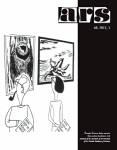
Journal ARS 48 (2015) 1
Zoltán GYALÓKAY
The superstructure of Master Paul’s Altarpiece in Levoča with the figures of apostles. An act of artistic commemoration?
(Summary)
The article concerns the group of twelve figures presenting the apostles, which is located in the retable in the church of St James the Elder in Levoča. First, the article presents the original context of the figures' creation. The author supports an argument, long known in relevant literature, that the figures were part of the adornment of the retable which in the 14th century was placed in the choir of St James Church in Levoča. The retable itself is unlikely to have been destroyed as a result of the armed raid on Levoča which took place at Easter in 1431. The opinion that the retable was destroyed in the raid has prevailed in professional literature for years, and rejecting it has been supported by presenting documented circumstances of the raid on Levoča and comparing them with descriptions of similar raids known in Polish historiography. On the basis of conservators' examinations carried out in recent years, it can be also ascertained that cutting off the heads of the apostles' figures and putting them on again was not due to the destruction caused by the soldiers and later repairs, but it was undoubtedly a stage in the carving of the figures in the workshop. The retable was placed on its site at the beginning of the second half of the 14th century and had probably remained ca. 150 years in situ until it was replaced with the monumental structure that has been preserved up to date. The main thesis of the article is the assumption that while creating the concept of the new retable Pavel of Levoča not only used the figures themselves, but he was also inspired by the structure of the previous retable when designing the new one. Indeed, the present-day superstructure does not resemble late Gothic constructions, in which the sculptures dominated the architectural structure. Contrary to such constructions, the crowning superstructure of the present-day retable with its dense and elaborated composition is more similar to the 14th century retables. This observation is illustrated in the article with examples of relevant works from the 14th century. Arguably, the decision of Master Pavel's workshop to use already existing figures was not accidental. Placing the figures of St Peter and St Paul on the axis of the retable in the lowest row, and putting St James, the saint patron of the church, on the very top shows a deliberate layout of the figures. By making a reference to the previous retable in the very construction of the superstructure, the new superstructure could become a commemoration of the previous retable, thanks to which the author (or authors) of the concept maintained an ideological continuity of the preceding work.